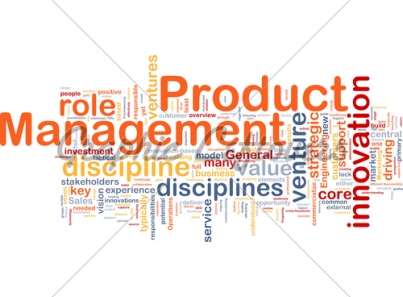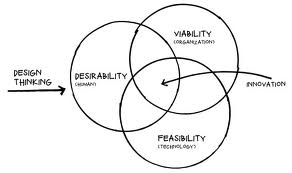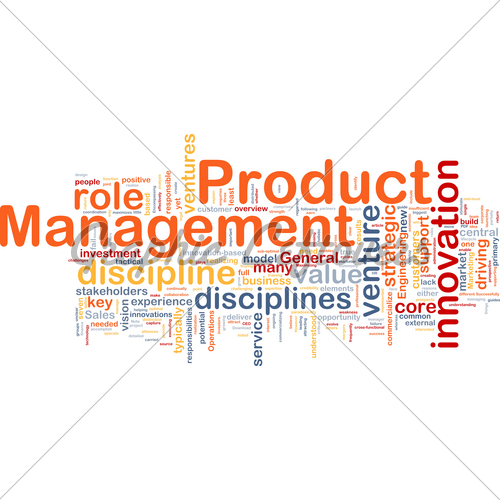 Avinash Raghava, who is doing a wonderful job of getting product start-ups together all over India, organized a product management roundtable with the help of Aneesh Reddy(CEO, Capillary). They invited Amit Ranjan (Cofounder, Slideshare – acquired by LinkedIn) and Amit Somani (Chief Product Officer, Makemytrip, ex-Google) to share their insights with a small set of entrepreneurs.
Avinash Raghava, who is doing a wonderful job of getting product start-ups together all over India, organized a product management roundtable with the help of Aneesh Reddy(CEO, Capillary). They invited Amit Ranjan (Cofounder, Slideshare – acquired by LinkedIn) and Amit Somani (Chief Product Officer, Makemytrip, ex-Google) to share their insights with a small set of entrepreneurs.
Credit for all the good stuff goes to Amit Ranjan, Amit Somani and Aneesh Reddy. Notes are rough. If anything is unclear, feel free to comment.
Here are some quick notes/thoughts from the event:
Who would make a good product manager?
Someone who can do 70% of everything (coding, design, listening to users etc.)
Best way to find a product manager in India is to find someone who did a startup but failed – he/she is likely to know all the various aspects that go into managing a product.
Someone who can lead by influence and manage to juggle all the balls in the air. Should be someone who can say NO.
It’s a very tough position to hire for – you need to have patience – you might go wrong the first few times. Once hired, give them around 5-6 months to get the hang of the whole thing.
What does a product manager do? What is his role about?
A good product manager would understand the requirements from various constituents and write a detailed specification, plan for bugs, testing, urgent requests and then create a product roadmap/deadlines.
A product manager has to identify and write down what metrics will move once the product is launched (e.g launching the mobile app will increase our repeat orders by 9%) – in some cases it is just to ensure that people work on things that matter but overtime it also brings more accountability.
User specs should have – what all do you need, who will use it and why – need to be elaborate it before you give it – need a hypothesis that will it move an X metric. Read thetwo page spec document that Joel Spolsky wrote for a fictional website What time is it? It should also have non-goals – what the product does NOT try to do.
Engineers tend to underestimate the time it’ll take – product manager needs to be able to correctly estimate how long something should take. And you will get better at it with time.
Use the 1/1/1 rule – sit with the engineering team and plan what needs to be accomplished in 1 week, 1 month and 1 six-month period.
People want to see the product roadmap – it is important for the CEO / Product Manager to communicate this to their team mates since a lot of people feel uncomfortable if they don’t have a clear idea of where the product is headed. (Amit Ranjan mentioned that people may even leave if they feel that the founding team does not have a clear vision – but the nature of start-ups is such that it is bound to happen that the product roadmap keeps evolving)
You need to hire coders who have a design sense (that eliminates 70% of work later).
Role of special data or analytics person has become very important (Amit Ranjan said that he could see that products of the future will be decided and influenced by data scientists). It is very important to get such a person on board early. Someone who has crunched SQL and nosql logs etc and can find trends and look up aberrations. Read up on Hal Varian and DJ Patil to understand more about this.
Difference between customer requirements and product requirements – customer requirement only becomes product requirement when more than 3 people require it (it’s a rule of thumb) – (People shared various tricks they use to ensure that the customer requirement is serious – “just wait for a few days and see if they come back with the same request”, “ask them to email it and not take feedback over the phone” etc. – these are situations where there is too much feedback coming your way. In most cases, it is best to make it as easy as possible for people to give you feedback).
Keep product engineering teams small – Amit Somani mentioned Jeff Bezos Two Pizza rule i.e. if the team cannot be fed by two pizzas alone, it is too big. Read more here.
Try to do daily scrum – gives everyone a sense of what everyone else is doing and ensures that people are making progress
Everything is a 6 page document – another Jeff Bezos funda for getting clarity. So a specification or a product request could be a 6 page long form document which ensures that the person achieves clarity before building anything.
You need to benchmark your product against other products especially in enterprise. When starting a product from scratch this can be a really useful exercise.
Amit Somani suggested a mental trick – before building a product, write a one page press release for the product that comes out upon product launch – what will this press release have? What the key features? The target audience etc. This PR drafting exercise could help you decide what to build, what is critical, and for which audience.
Don’t ignore email as a channel for activation and returning visitors
Product activation – Use banners on your own website – do get them to take action – on landing page – on other parts of the website
Track at your mobile traffic – people at the roundtable reported some crazy growth numbers for mobile internet usage – huge sites are now getting 20% to 60% of their traffic on mobile. Mobile traffic is split 50%-50% on mobile browser (including WAP) and mobile apps. This was a big eye opener for many people.
Tools people recommended
Use Trello (a Joel Spolsky product) to manage your product
Use Zapier business tool to connect various sources of product input (e.g. taking Zendesk tickets and automatically creating Github issues)
Use Clicktale or Inspectlet to record user sessions
Use Morae for recording users’ reactions when they are using your product ((Amit Somani mentioned how they put a live usage recording on a LCD screen in the technology room so that engineers could understand how their products were being used – it lead to a lot “can’t he just click on the button! Why is he scrolling up and down!”). One way to get users for such recordings is to ask interview candidates who come to your office to use your product and see their reactions.
Use a call-outs software when introducing new product features (like Cleartrip / WordPress / Facebook do).
Concluding notes
This was one of the most gyan-heavy sessions that I’ve attended. It was useful to hear things from people who had been there done that. Aneesh (even though he is based out of Bangalore) had taken the lead to do this with Avinash and our hope is that the group meets every 6 weeks to keep the conversation going. We’ll keep you posted.
Feel free to email me at ankur AT Akosha dot com if you’d like me to give more details to you.
On a related note, there was some basic debate about what a “product” is. We didn’t get into it at length because everyone in the room intuitively understood what a “product” was. However, we had internally debated about it – if you are interested, do read –Understanding Product v. Service [ThinkLabs Notes 1].
Reblogged from the Akosha Blog by Ankur Singla




 In this time of volatility and complexity, the role of design to drive meaningful innovation and change is growing and while there are multitude of factors that need to be taken into consideration for a product design that is desirable, feasible & viable the design thinking process can help overcome these product characteristics.
In this time of volatility and complexity, the role of design to drive meaningful innovation and change is growing and while there are multitude of factors that need to be taken into consideration for a product design that is desirable, feasible & viable the design thinking process can help overcome these product characteristics.
 Altogether, #Design thinking event saw noteworthy achievement with 40+ design thinkers joining us from NCR and could leverage the platform listening some inspirational talks from speakers and meeting few like minded folks around. Had participant mix from passionate startup entrepreneurs to designers & dev engineers. Audience was glued to program embracing the talks & interactive workshop from functional experts in domain.
Altogether, #Design thinking event saw noteworthy achievement with 40+ design thinkers joining us from NCR and could leverage the platform listening some inspirational talks from speakers and meeting few like minded folks around. Had participant mix from passionate startup entrepreneurs to designers & dev engineers. Audience was glued to program embracing the talks & interactive workshop from functional experts in domain.
